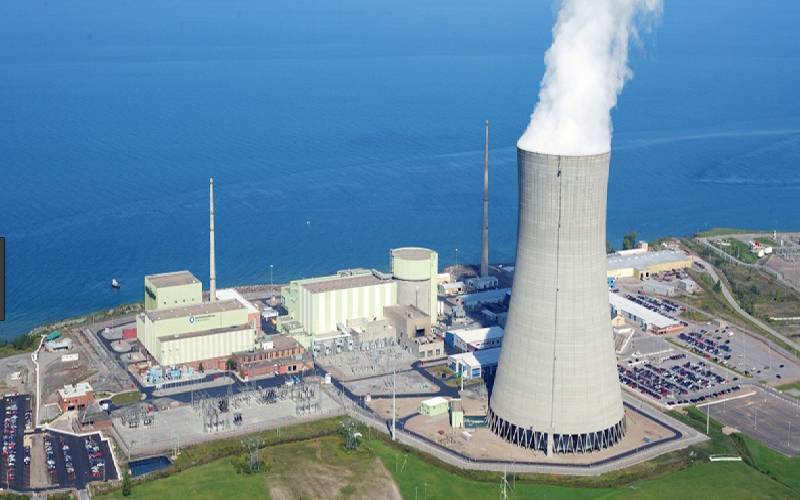
Some of the challenges that the nuclear industry faces include existence of opposing groups and requirement for long-term political and economic commitment. The industry is a highly technological one surviving on hard scientific knowledge. It is marred by public fear and mistrust, possibly as a result of Three Mile Island, Chernobyl and Fukushima nuclear accidents.
A key question that energy professionals need to answer is whether Kenya really needs nuclear power plants (NPPs). To answer this question, professionals should consider safety of reactors, possibility of reactors releasing radioactive material during plant operations and general efficiency of nuclear power in comparison to other sources of energy. Whenever nuclear energy is mentioned, what comes to mind are atomic bombs and the devastating effects of the nuclear weaponry industry.
The general public is oblivious of the benefits of nuclear energy; benefits that have seen lots of scientific developments, more so with regard to improvement of living standards.
Nuclear science has been incorporated in desalination of salty water, radiotherapy and production of electricity. With nuclear power plants, you can produce low-cost, reliable, and quality electric power for prolonged periods. The design life for standard NPPs stands at sixty years from commissioning to decommissioning of the plants. However, various technical periodic safety reviews are conducted on nuclear plants after every 10 years of operation and from these technical reports, the operating life of the plants may be extended from 60 to about 80 years.
An American writer, who doubled up as an environmental policy leader and former Assistant Secretary of State, Eileen Claussen notes: “The world needs to triple the amount of electricity it gets from non-carbon sources – like nuclear, wind, and solar – to provide the energy we need and reduce carbon emissions.”
On safety, in comparison to other types of power plants, nuclear plants are the most protected against accidents that are either postulated or encountered during normal operations of the plant. Strategies for their safety include regular inspection for safety and verification of nuclear materials; implementation of stringent quality assurance programmes during siting, design, operation, maintenance and decommissioning; regular monitoring of releases of radioactive material to air and water to check compliance with established limits and elaborate physical protection systems that prevent terrorist and criminal acts.
Does Kenya really need nuclear energy? The answer may partly be derived from current status of Kenya’s energy production, forecast energy demands and production strategies. From simulated demand forecasts, the peak load is projected to grow to about 15000MW in 2030 up from 2500MW in 2015. In bid to meet the demand, the Ministry of Energy projects that the installed capacity should gradually increase to 19200MW by 2030.
Also to achieve the forecast demand, generation planning must involve a strategic energy mix that looks beyond the mix of geothermal, wind, solar, coal, petrol-thermal plants and imports from neighbouring countries. According to Sessional Paper no. 4 of 2004, the challenges facing Kenya’s energy sector include insufficient infrastructure with regard to transmission and distribution that arises from limited investments in power system upgrading.
About 288 nuclear power plants currently operate in 31 countries worldwide. Some of the countries that have greatly benefited from the energy mix derived partly from nuclear sources include South Korea, France, China, Taiwan, Japan, US, Germany and South Africa. With Africa exhibiting high economic growth rates, incorporation of policies that inhibit bottlenecks to smooth economic activities is of key importance.
Cost of electricity in Kenya is more than thrice that of China, and four times that of South Africa, according to KIPPRA. More specifically, the average electricity cost in Kenya is US$0.150 per KWh, while it stands at US$0.075 in Mexico, US$0.070 in Taiwan and China, US$0.064 in Colombia and US$0.040 in South Africa, according to Institute of Economic Affairs. As manufacturing is part of the Government’s big 4 agenda, cheap, reliable and quality energy will be a great incentive to investments in the sector.
One of the drawbacks of nuclear energy is that it is an expensive capital project. Although the cost of installation is higher than that of other competitor plants, the installation coupled with adequate upgrade of Kenya’s transmission and distribution networks would see significant drop in the cost of electricity by about three times the current market rates.
Due to its sensitive nature, appropriate regulatory and physical infrastructure, human resource development, training and awareness of the general populace needs to be established in the blue-print for nuclear energy development. Without these structures, Kenya’s dream to produce cheap, quality, reliable nuclear power will remain that—a dream.
Mr Maklago, a Kenyan Researcher, is an NPP postgraduate student at Kings University, South Korea
 The Standard Group Plc is a multi-media organization with investments in media
platforms spanning newspaper print operations, television, radio broadcasting,
digital and online services. The Standard Group is recognized as a leading
multi-media house in Kenya with a key influence in matters of national and
international interest.
The Standard Group Plc is a multi-media organization with investments in media
platforms spanning newspaper print operations, television, radio broadcasting,
digital and online services. The Standard Group is recognized as a leading
multi-media house in Kenya with a key influence in matters of national and
international interest.
 The Standard Group Plc is a multi-media organization with investments in media
platforms spanning newspaper print operations, television, radio broadcasting,
digital and online services. The Standard Group is recognized as a leading
multi-media house in Kenya with a key influence in matters of national and
international interest.
The Standard Group Plc is a multi-media organization with investments in media
platforms spanning newspaper print operations, television, radio broadcasting,
digital and online services. The Standard Group is recognized as a leading
multi-media house in Kenya with a key influence in matters of national and
international interest.










